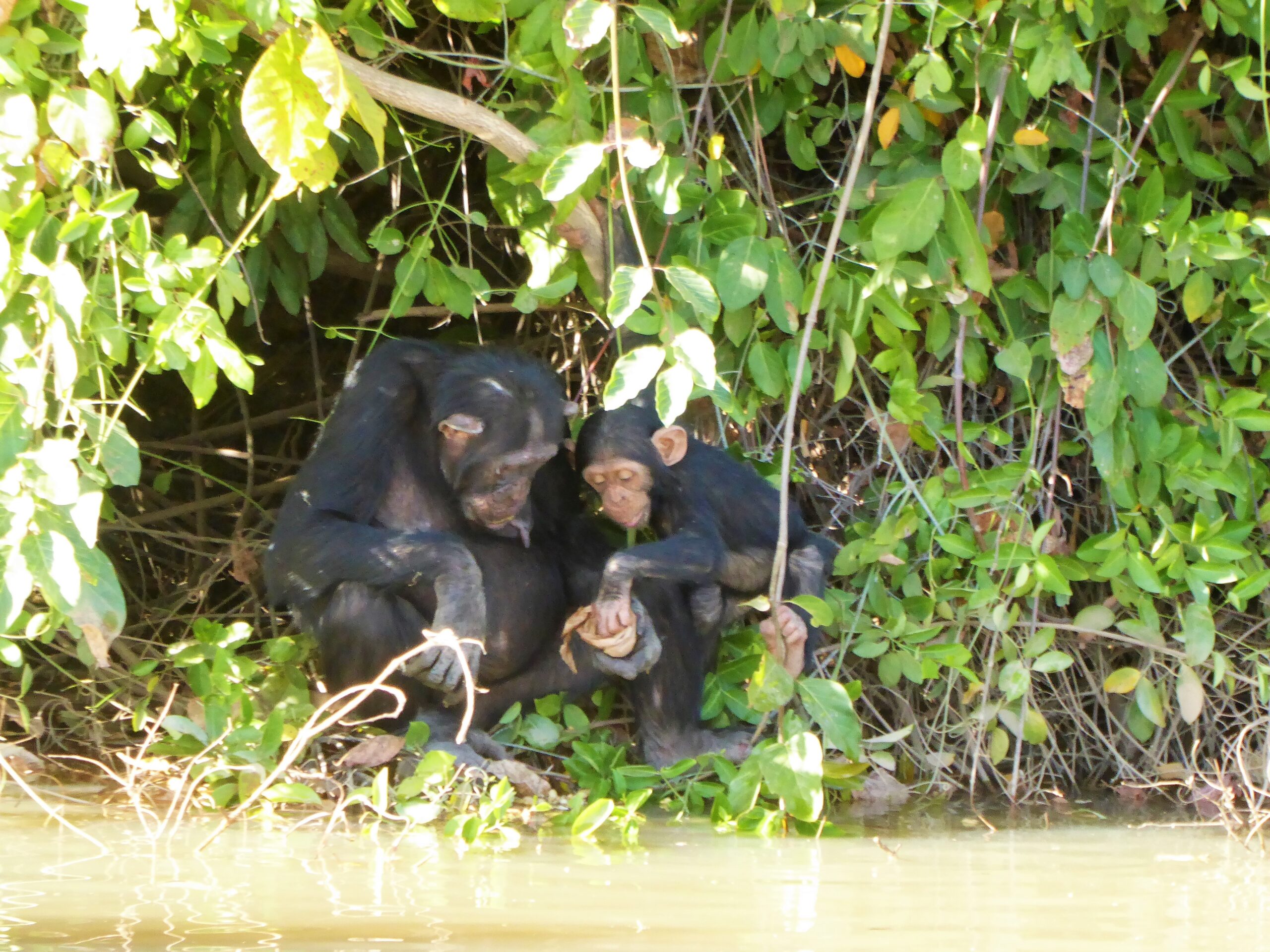Stone Circles, Chimpanzees and Authentic Village Life. If you go to The Gambia, you should also discover something of the country! There are many resorts on the coast. I hear from many tourists that they go for the all-inclusive option. That’s not for me. But I did choose a resort. I had my room with a view of a lovely swimming pool for the full two weeks. Yet I went out several times. Into the inland of The Gambia! 🙂
Because what’s better than exploring the area on a bicycle? I did that at Wassu. That same day I also got on the boat. I got to admire the chimpanzees on Baboon Island. My day couldn’t get any better!
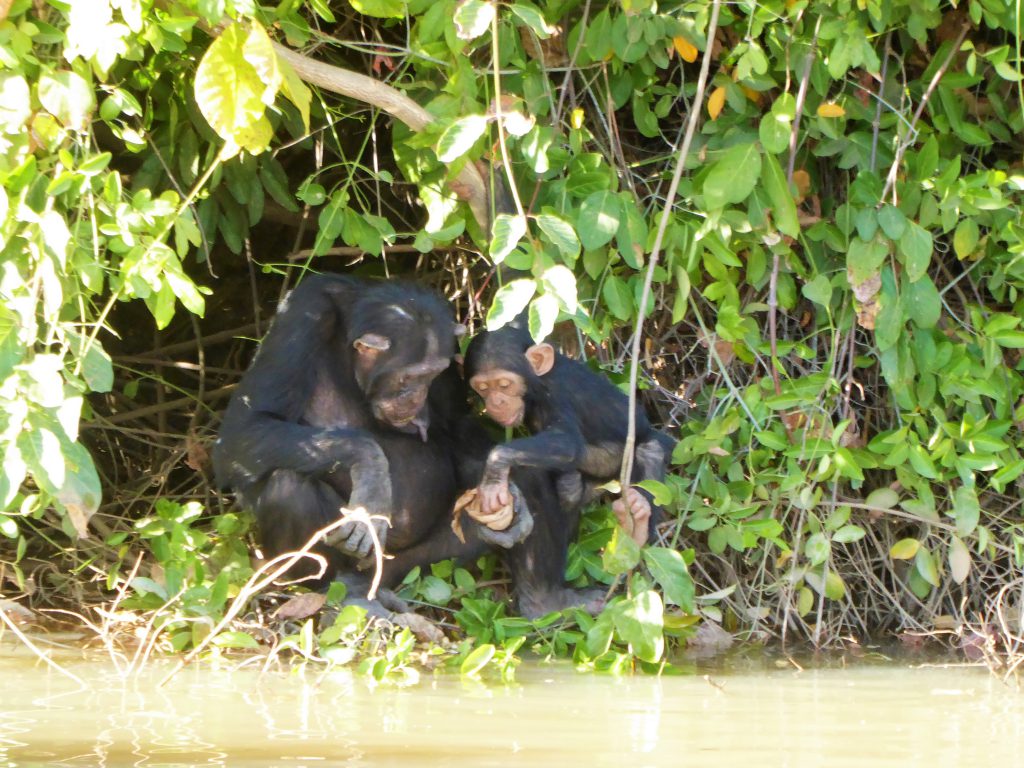
I actually wanted to travel alone. I do that everywhere, so why not here? But I was constantly advised against it. Eventually I chose to listen to it and take a local guide with me.
Read my considerations here.
So I went inland with Aka. Or ‘Captain’. Or ‘Captain Aka’. Did you know that everyone has nicknames in The Gambia? Aka’s real name is actually Amadou.
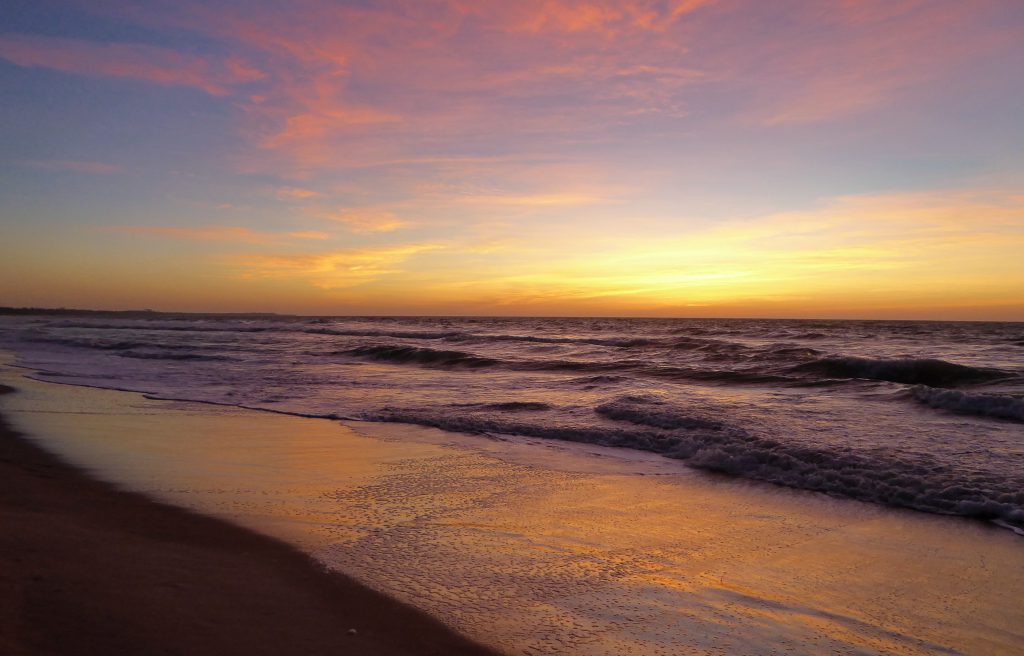
We had a great time. The following places were on my list: Georgetown, Kuntaur & Wassu. I had a reservation at Kairoh Garden in Kuntaur. We would stay for 2 nights. From there we could explore the area well.
Day 1: The Journey to Kuntaur via Georgetown
Departure from Bijilo
We left early in the morning from Bijilo. To Kanifeng, Serekunda, where the bus would depart. This was the large touring coach bus of the company GPTS (Gambia Public Transport Service). In total the bus took about 5 hours. With some short stops.
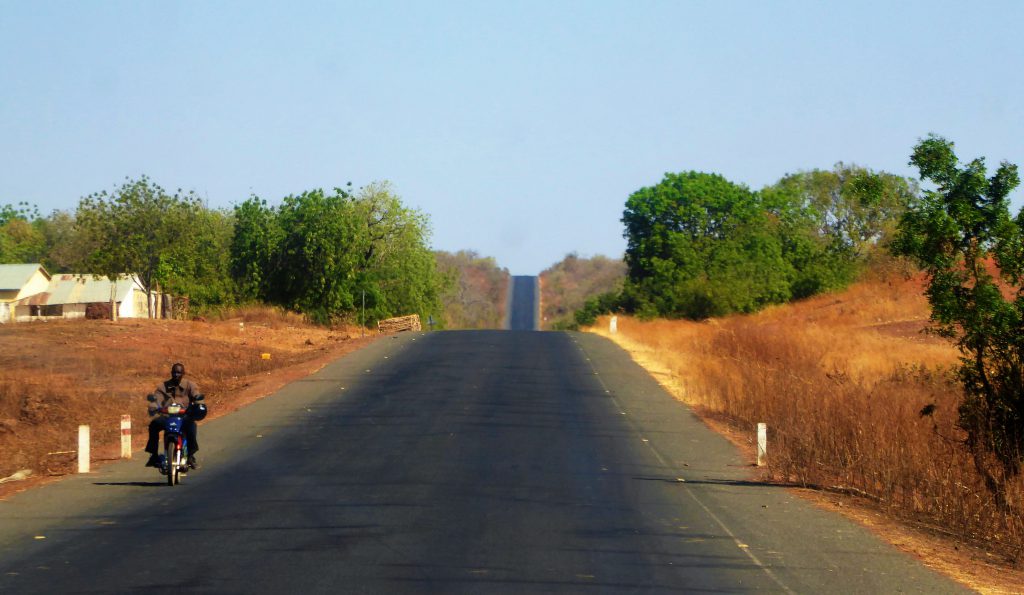
I was amazed! I loved seeing the country pass by. Villages. People just coming outside as the day begins. Children walking to school. Work in the countryside.
I loved it!
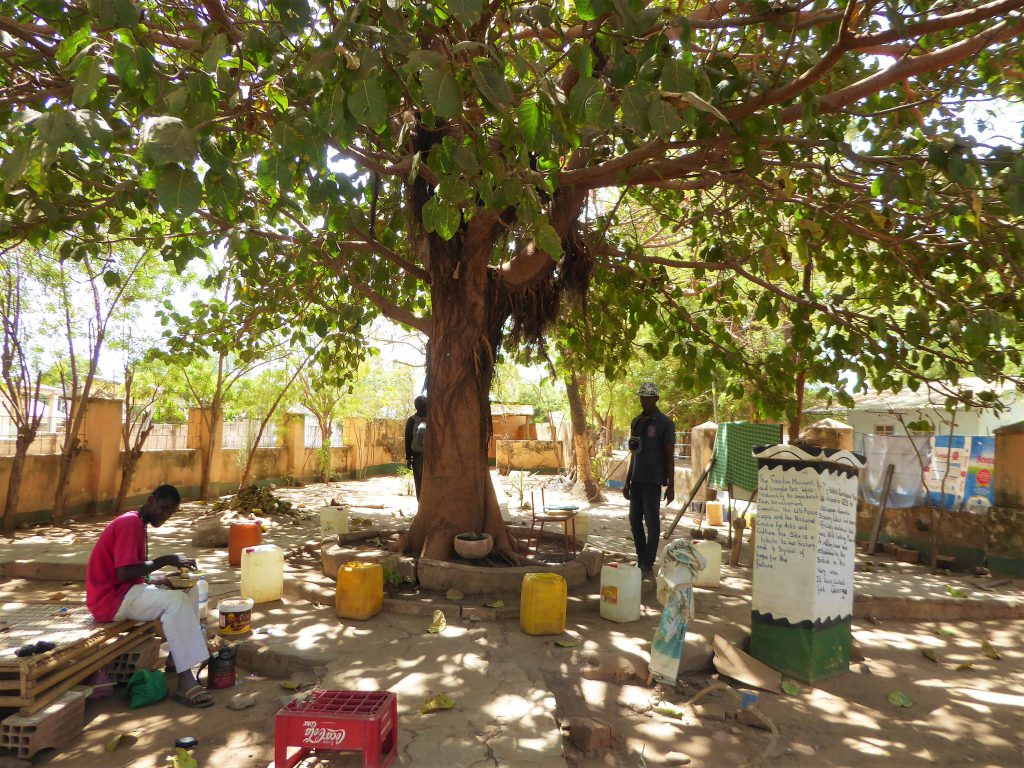
Stop in Georgetown / Janjanbureh
The end point of our bus journey was Georgetown – Janjanbureh. A place you shouldn’t skip, I think. A walk is enough. But the slavery history there can give you an idea of how things went. However terrible it is.
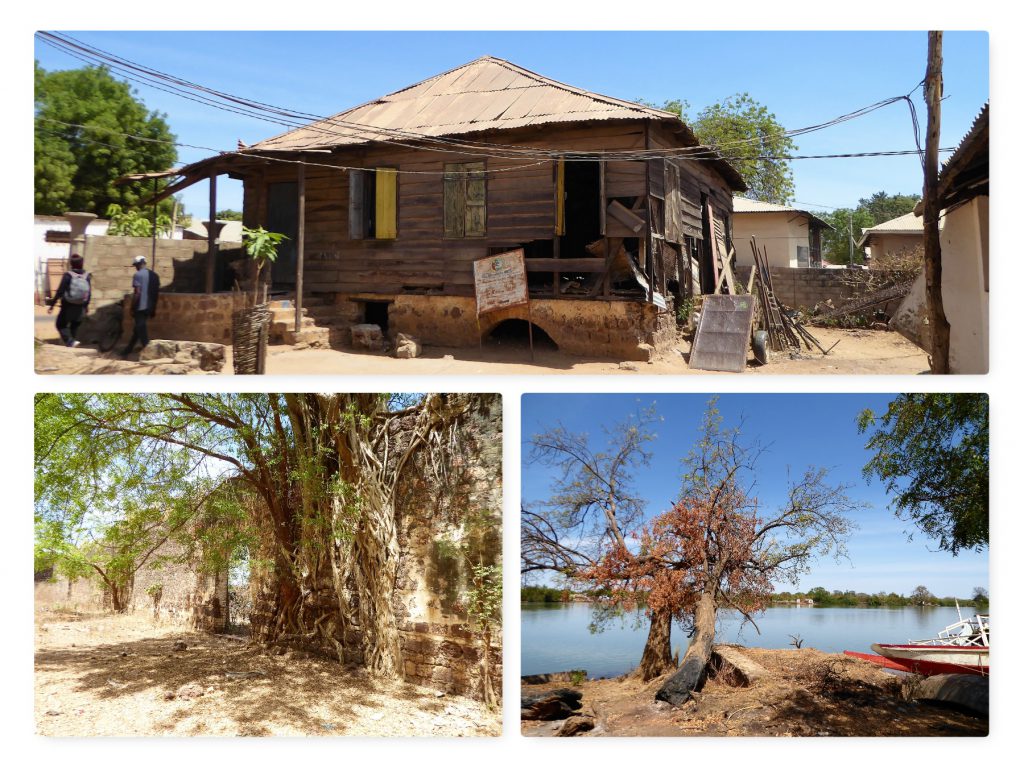
We walked through the streets. Past the Freedom Tree. To the old storage houses by the river. The basement with chains. Confronting. Uncomfortable. Important.
Read more about my visit to Georgetown/Janjanbureh
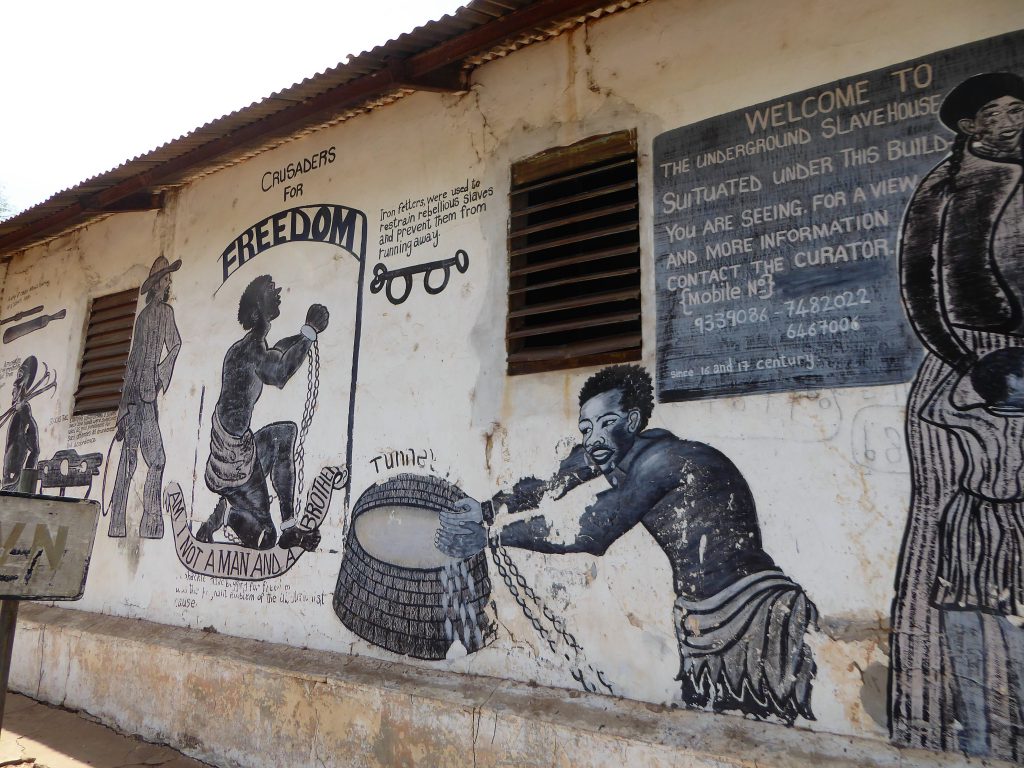
Crossing via the Gambia River
After this walk we made the crossing over the Gambia River. The river is incredibly wide at Banjul. But here? Here you could swim to the other side within a few minutes… were it not that crocodiles swim in it. So we waited patiently for the ferry. 🙂
The ferry is a small boat. Local. Authentic. The water ripples quietly. The other side comes closer. This is the real Gambia.
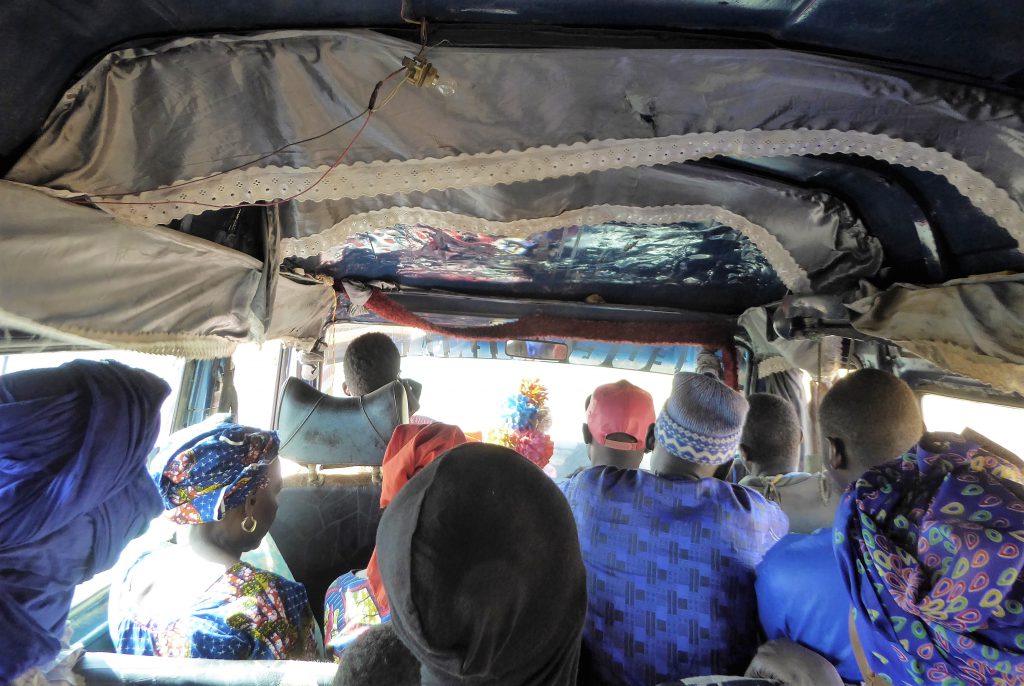
The Bush Taxi to Kuntaur
We were quickly on the other side. But there we had to wait at least an hour until the bush taxi was full. A bus that can fit at least 20 people. Yes, not in the Netherlands. But in Gambia! 🙂
After a ride of about 40 minutes we stopped on the main road along the village of Kuntaur. We started walking. Soon we got a lift from a man who was also going there. On the road stands a sign: Kairoh Garden. It was supposed to be 1 km from the road. Well… make that 3. But you do get a walk through the village of Kuntaur right away.
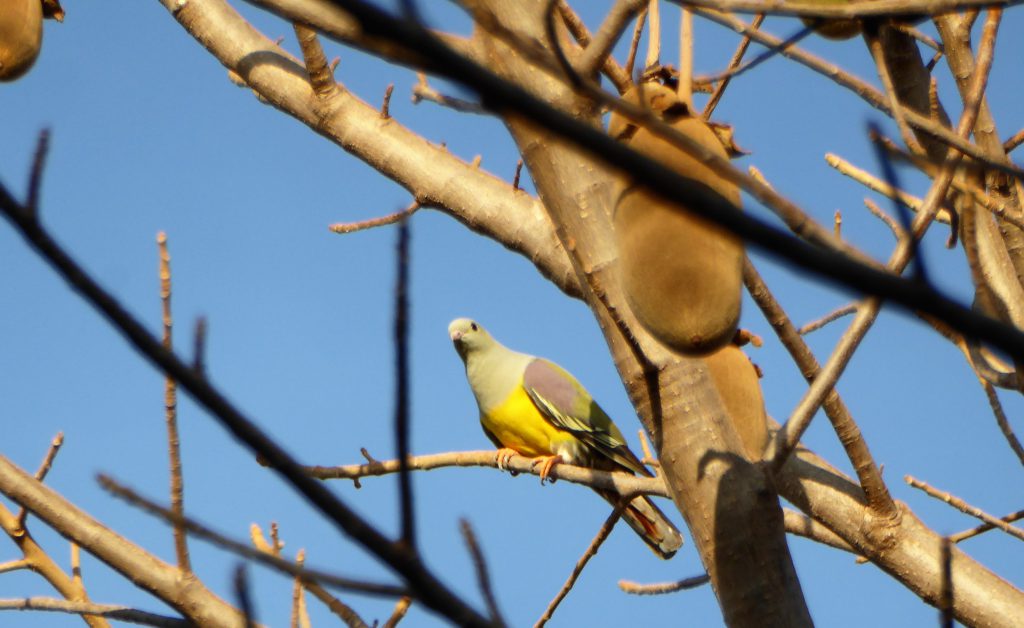
Arrival at Kairoh Garden
I thought Kairoh Garden was a really lovely spot!
Right on the Gambia River. A green garden with large trees. Simple but clean huts. A terrace overlooking the water. Peace. Quiet. Birds. Just perfect.
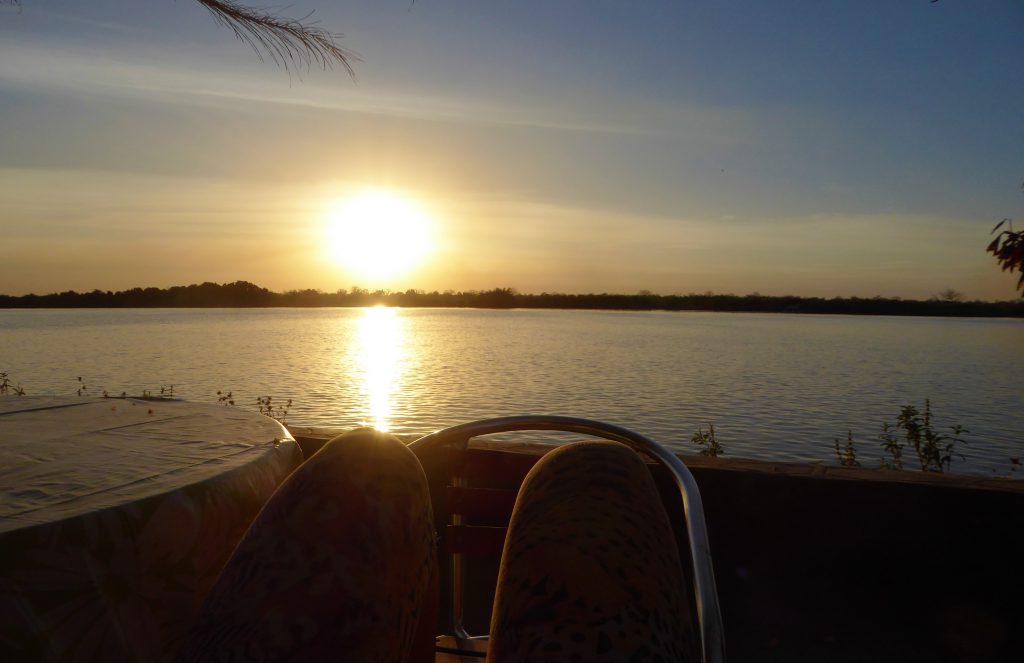
Day 2: Cycling to Wassu Stone Circles
Renting Mountain Bikes
The next morning I naturally wanted to explore the area. I had seen two mountain bikes. I asked if I could rent them. Of course I could! I could give them what I thought it was worth afterwards. They didn’t actually rent them out. They were just their own bikes. 🙂
Typically Gambian hospitality. Relaxed and trusting.
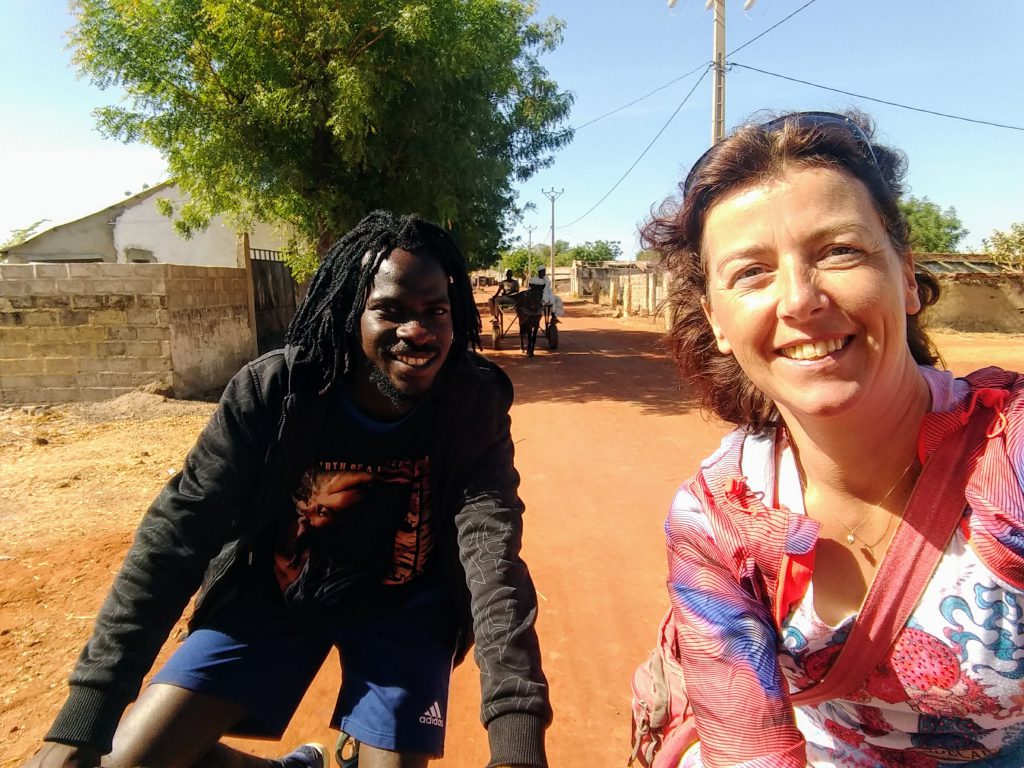
Through the Village of Kuntaur
We cycled through the village. Across the main road. Straight to the stone circles of Wassu. Kuntaur is interesting to cycle through. There are few to no Western influences. Children run after you. Women wave from their yards. Goats walk around freely. Donkeys pull carts.
And then that countryside with those enormous trees. Amazing, right? Baobabs dominate the landscape. Ancient. Imposing. Magical.
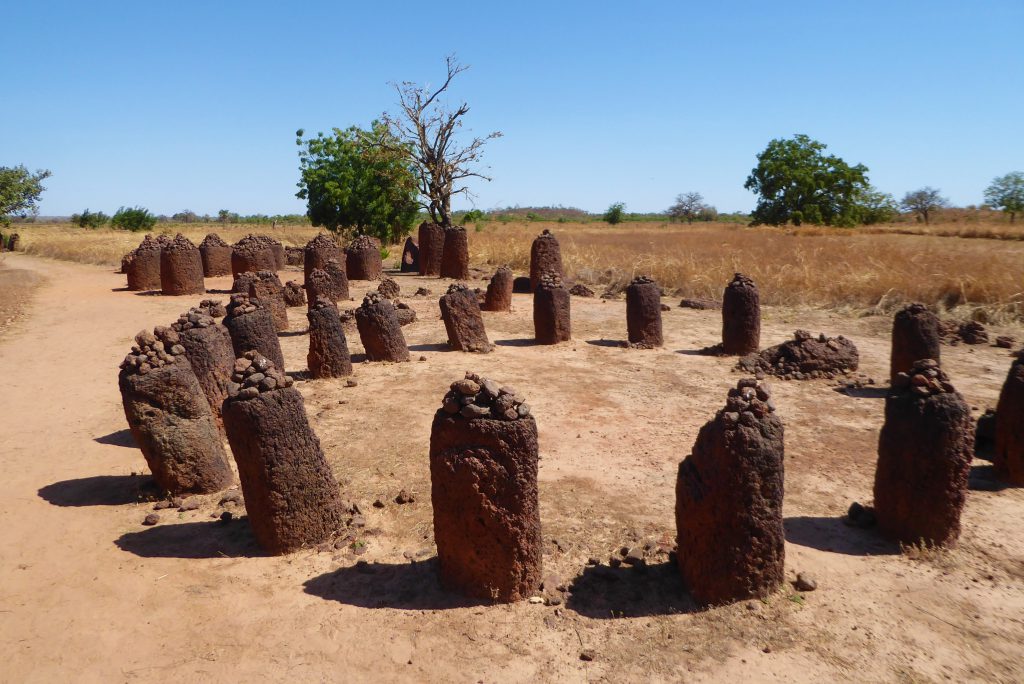
Wassu Stone Circles: UNESCO World Heritage
We reached the stone circles of Wassu. There’s a small museum. There’s some explanation and some stones lying around. Here it became clear to me: they don’t actually know for sure. Graves? Places for sacrifices? Something else? Just like the Plain of Jars in Laos or the Dolmen in The Netherlands, it’s not entirely clear.
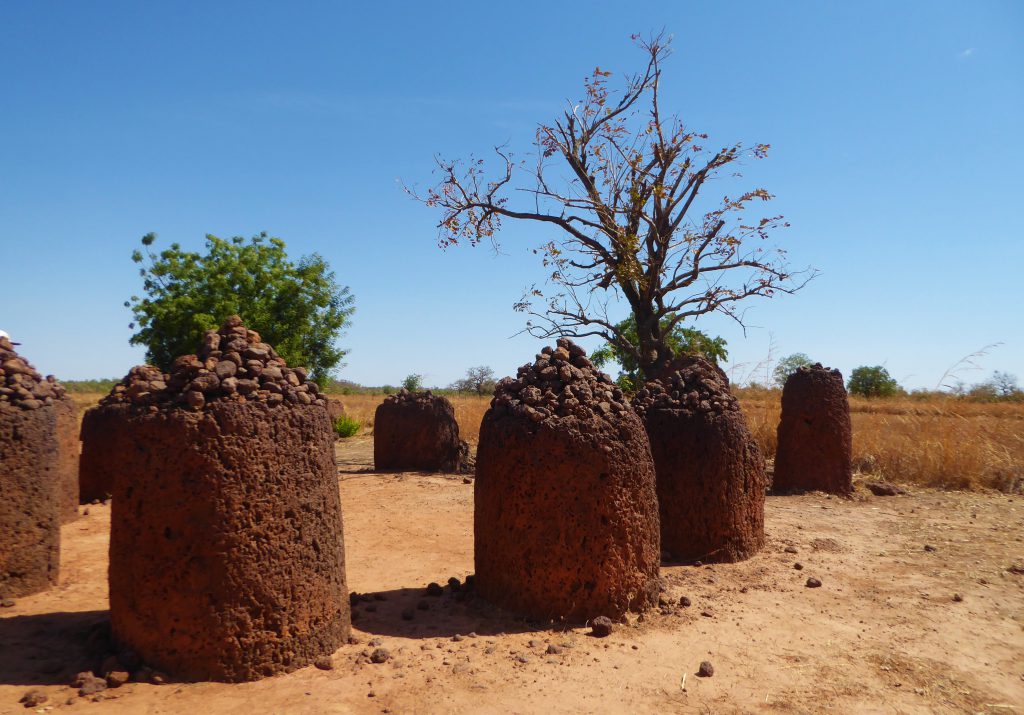
Did you know that the Wassu stone circles are on the UNESCO World Heritage List?
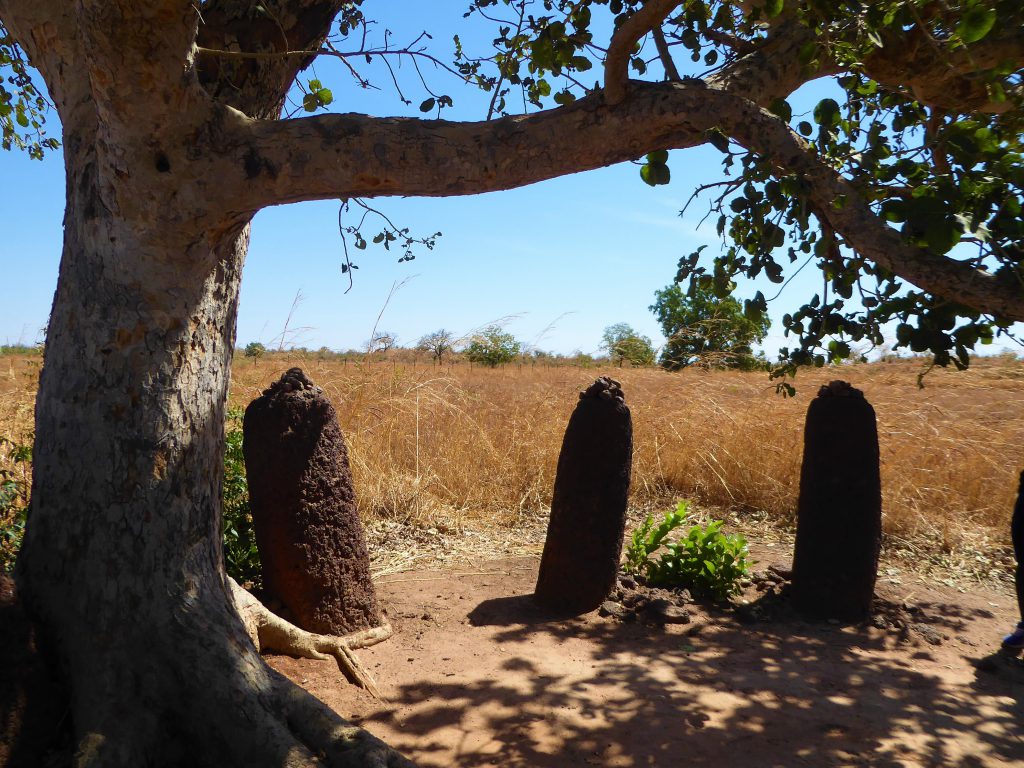
The History of the Stone Circles
The stone circles of Wassu date from between 750 and 1000 AD. There are 11 stone circles with a total of 53 stones. Some stones are more than 2.5 meters high and weigh several tons.
The stones are made of laterite – an iron-rich rock typical for this region. How they transported and erected these enormous stones remains a mystery.
There are four stone circle locations in The Gambia that together form the UNESCO World Heritage:
- Wassu (where I was)
- Kerbatch
- Wassu East
- Kuntaur
In total there are more than 1000 stone circles in the Senegambia region (Senegal and The Gambia together).
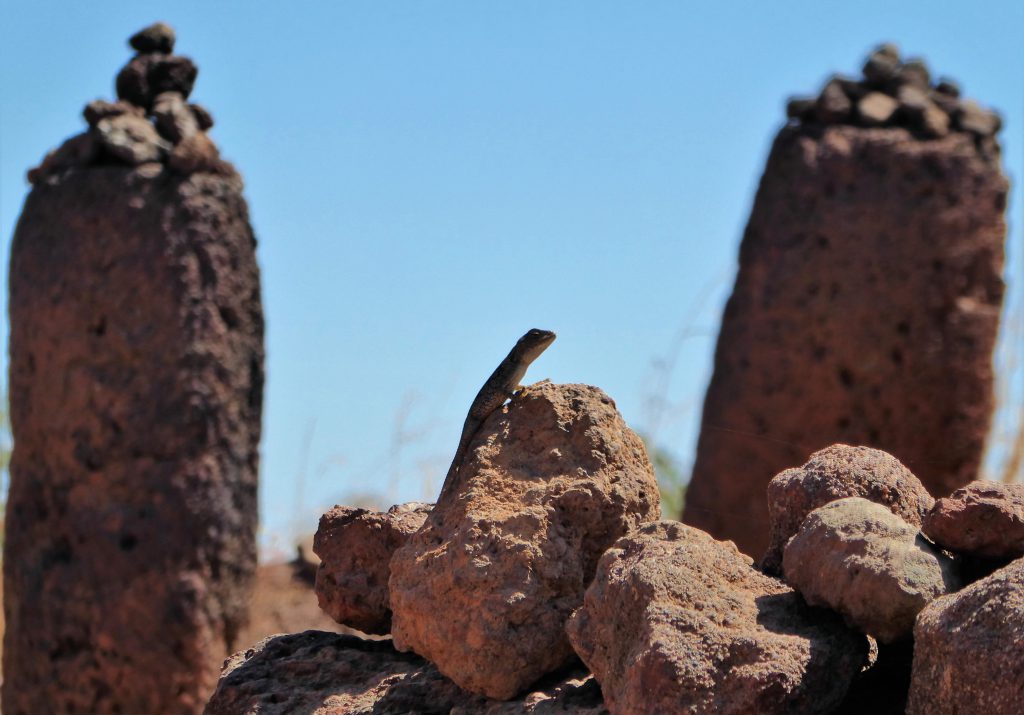
What is Thought About the Stone Circles?
Most archaeologists think they are burial monuments. Human remains have been found under or near the stones. Also valuable objects like pots, jewelry and weapons.
But there are more theories:
- Religious ceremony sites
- Astronomical markers (for tracking seasons)
- Territory markers
- Meeting places for tribes
The mystery makes them all the more fascinating.
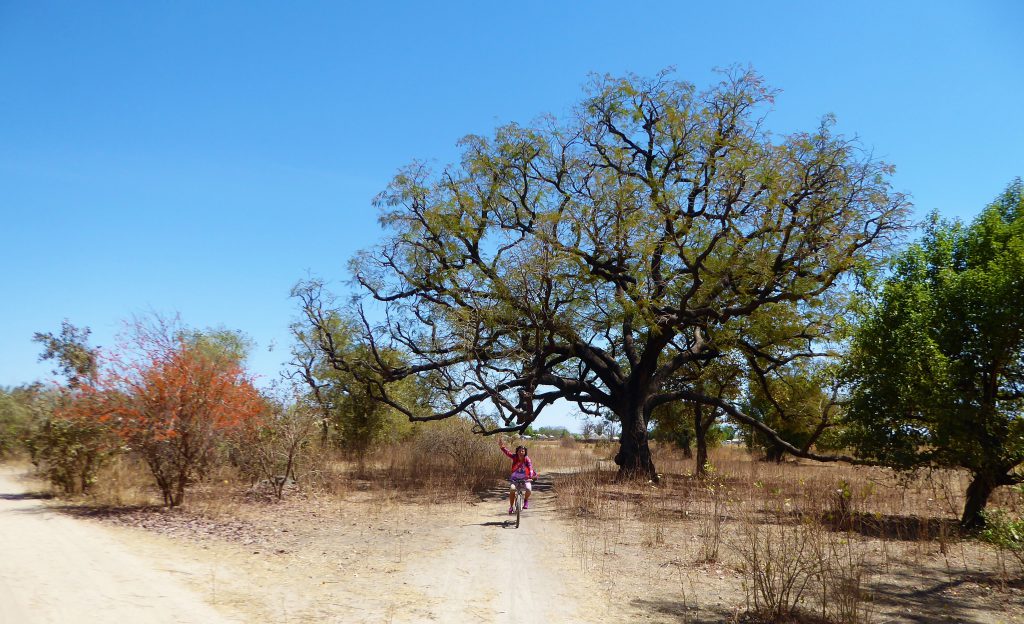
How do you like these big trees?
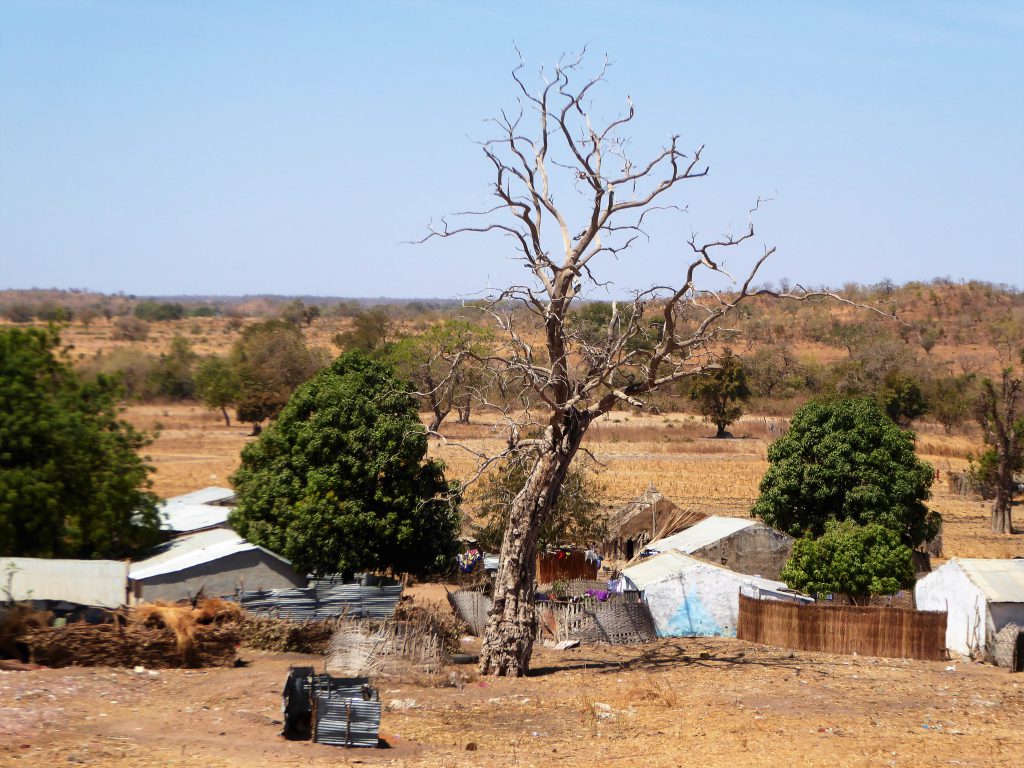
Encounters Along the Way
The advantage of taking a local companion? He meets people he knows everywhere.
The Gambia is so small and has so few inhabitants (2 million) that he knows them from family, from work, or you name it.
So we were invited to a family. To come inside for a moment. To drink tea. But also to stand on their hill for the view! Just like the Netherlands, The Gambia is incredibly flat. 🙂 So a hill in your backyard is already a nice attraction! I thought the view was great too!
From that hill you can see for kilometers. Villages in the distance. The Gambia River winds like a ribbon through the landscape. Endless green fields. The horizon seems infinite.
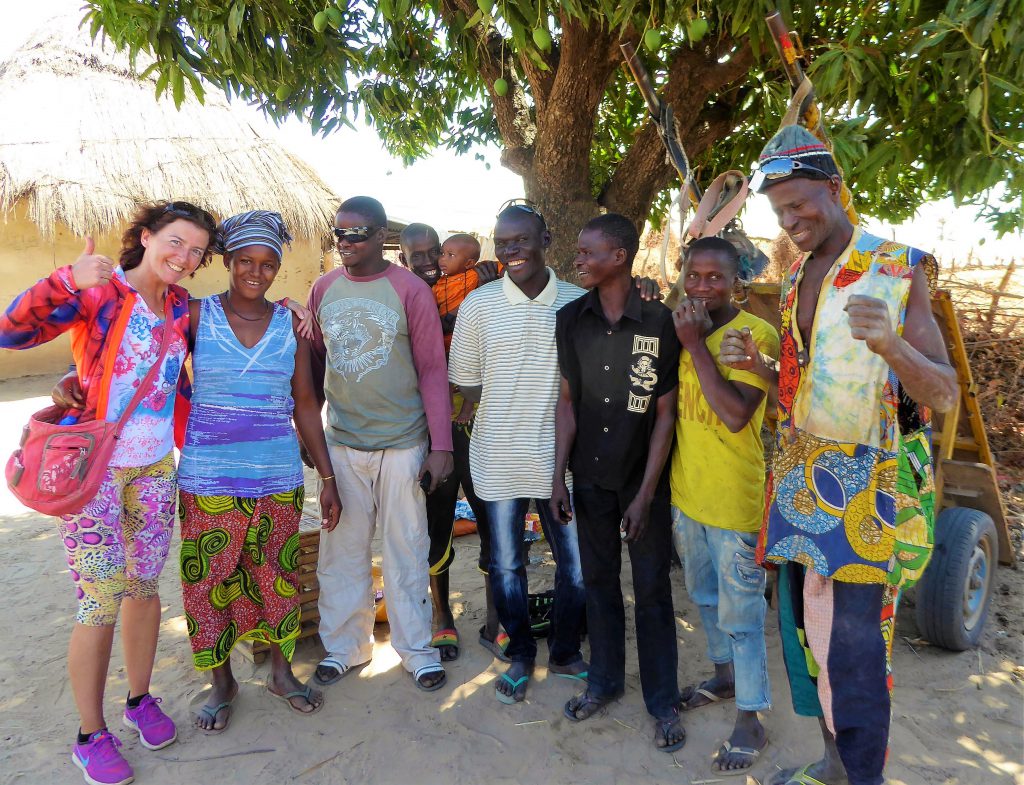
Going inlands to Wassu & Kuntaur
Bird Spotting
We also took some time to spot birds. You can hardly miss them. But to get them on camera you do need some time. 🙂
I spotted my most favorite bird: the roller. The purple breasted roller, with that beautiful blue color on the wings!
Other birds I spotted:
- Bee-eaters – brightly colored, acrobatic
- Kingfishers – along the river
- Hamerkop – with that characteristic hammer-shaped crest
Other birds you can spot:
- Marabou storks – large, imposing birds
- Parrots – noisy and colorful
- Eagles – circling high above the landscape
The Gambia is a paradise for bird lovers. More than 500 bird species can be found here!
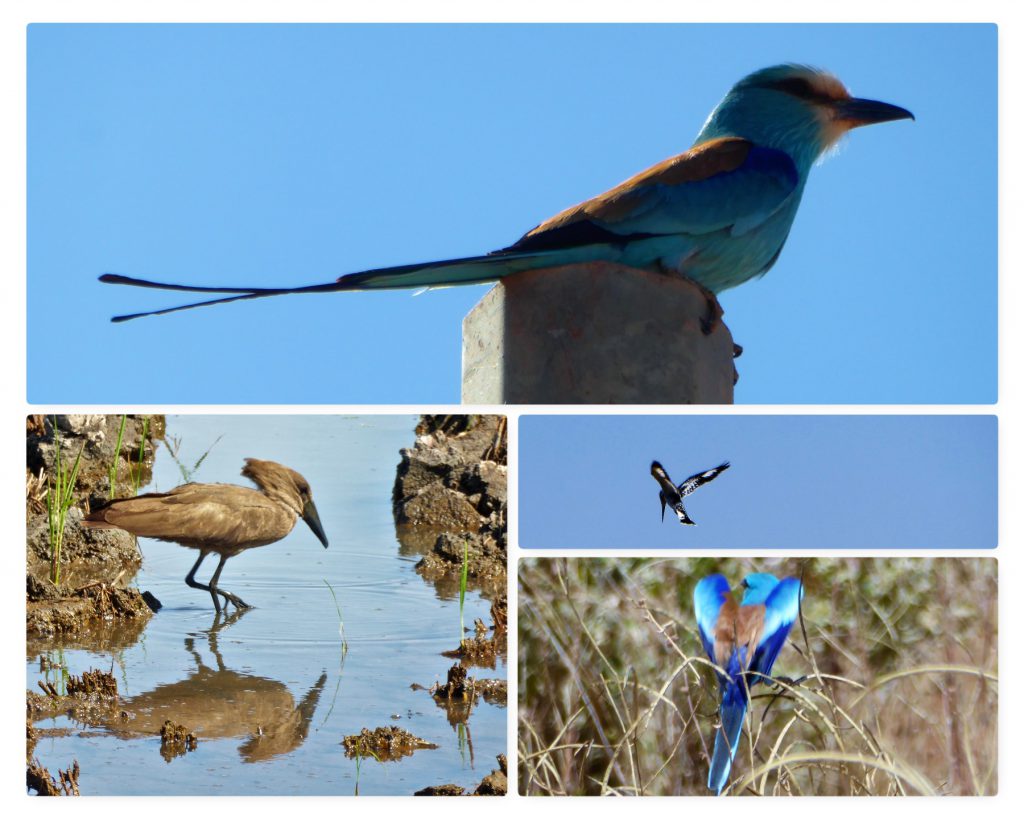
Day 2 Afternoon: Baboon Island – Spotting Chimpanzees
Relaxing at Kairoh Garden
After a nice relaxation in the garden of Kairoh Garden. Then it was time to get on the boat. We were going to Baboon Island.
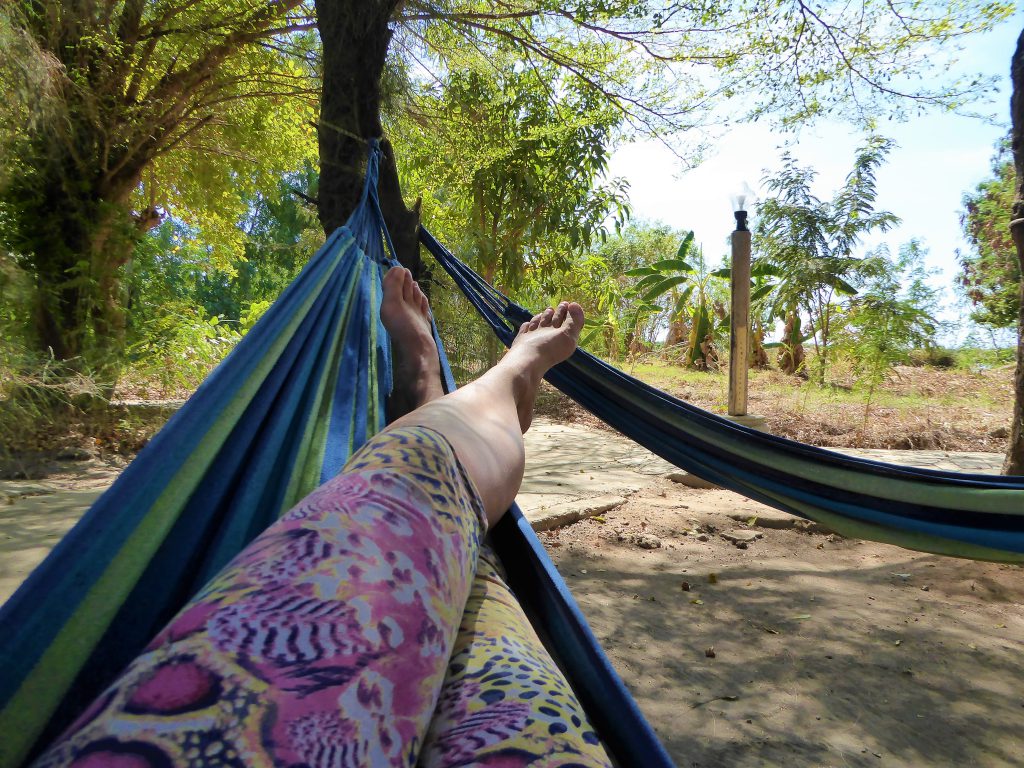
The Best Time to Go
The best time is at the end of the afternoon. Because… yes, then they’re fed. These chimpanzees have been returned to the jungle. They’re basically self-sufficient again. But they’re still being supplementary fed. They naturally find this very convenient.
It also struck me that they get peanuts. Those are naturally harder for them to find. This way they naturally always come to the edge of the island to get them. And so the tourism trip also continues to exist well. Because you’ll definitely see them!
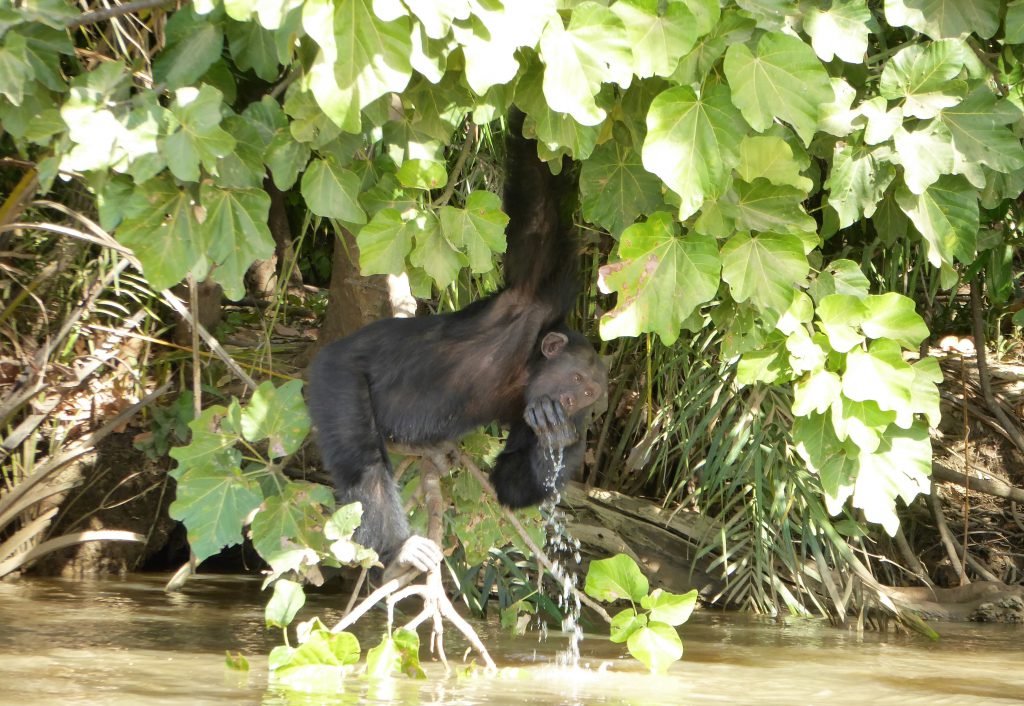
About Baboon Island National Park
Baboon Island National Park – also called River Gambia National Park – was founded in 1978. It consists of five islands in the Gambia River:
- Baboon Island (the largest)
- CJ Island
- West Island
- Grant Island
- North Island
The park was founded as a rehabilitation center for chimpanzees. These chimpanzees were rescued from captivity, from circuses, kept as pets, or from illegal trade. Even the chimpanzee Lucy from the United States lived here for a while.
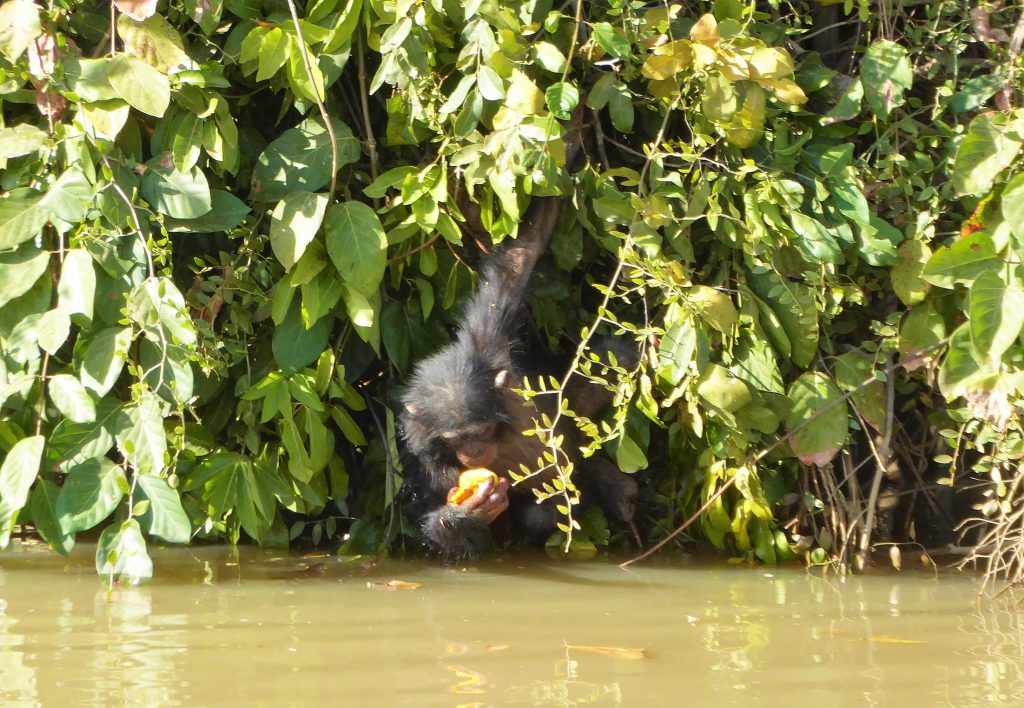
The Rehabilitation Program
The project was started by Stella Brewer (later Marsden). She started rescuing and rehabilitating chimpanzees in the 1970s. The goal: to return them to the wild.
The chimpanzees are divided into groups:
- Alpha Group
- Beta Group
- Gamma Group
- Delta Group
There are currently approximately 100-140 chimpanzees on the islands. They live in social groups, as in the wild.
Meeting the Chimpanzees
If I remember correctly, these are father and son. Father is Djambo and he’s 42 years old. How nice is it to see them sitting like this? We’re watching monkeys… and they’re watching back. 🙂 And… they have peanuts too!
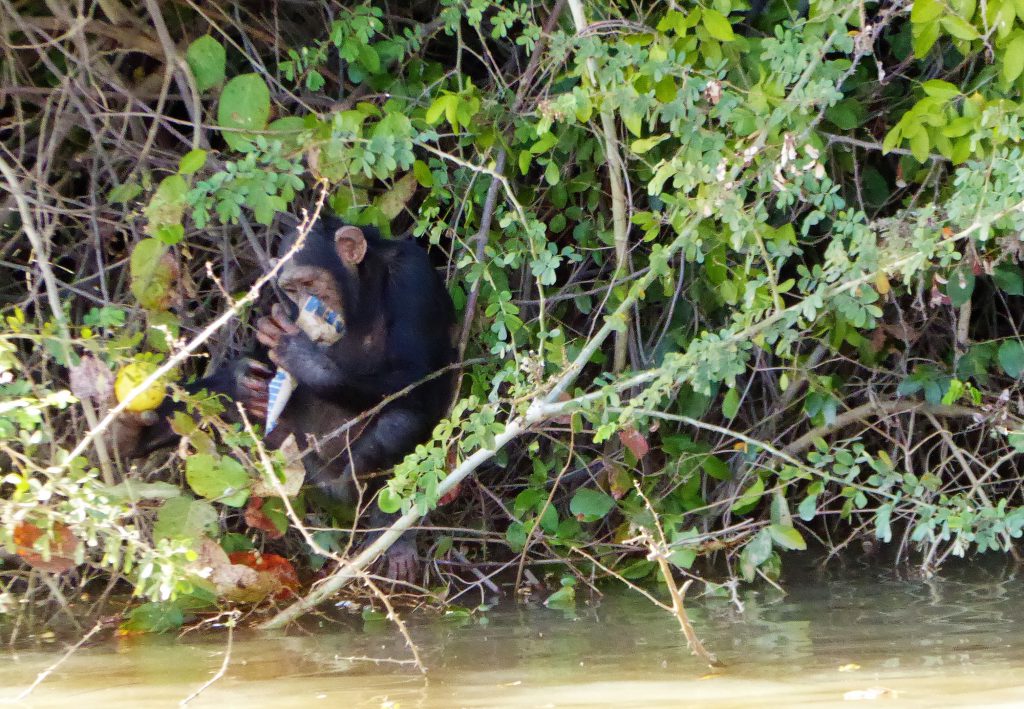
Facts about chimpanzees:
- They can live 50-55 years
- The oldest chimpanzee here is 45 years
- From their 14th year they can get pregnant
- The gestation period is 8-9 months
- They live in groups of 20-40 individuals
- They are 98.8% genetically identical to humans
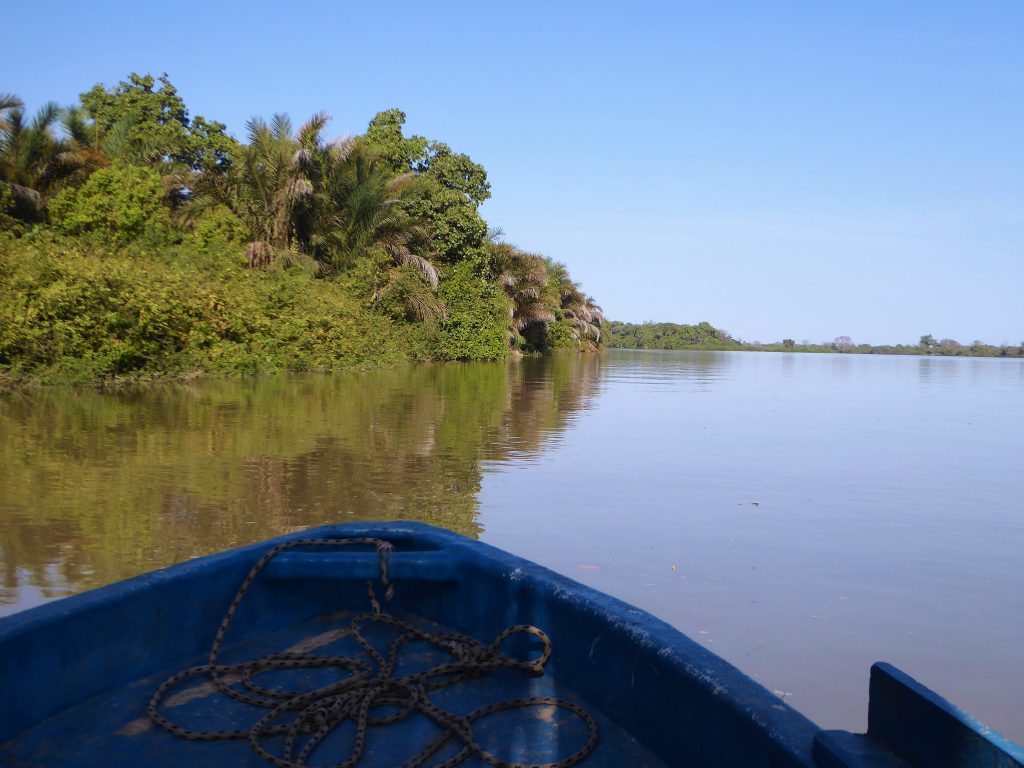
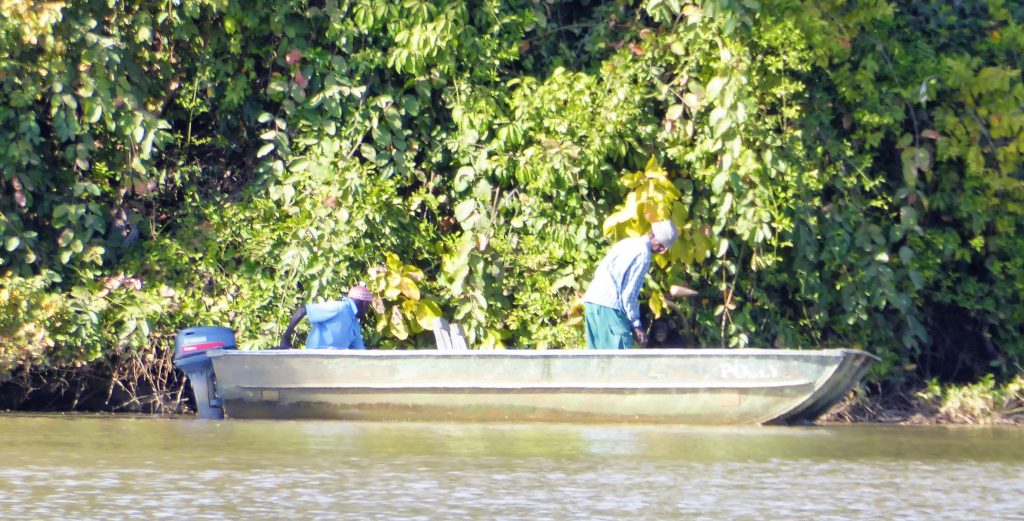
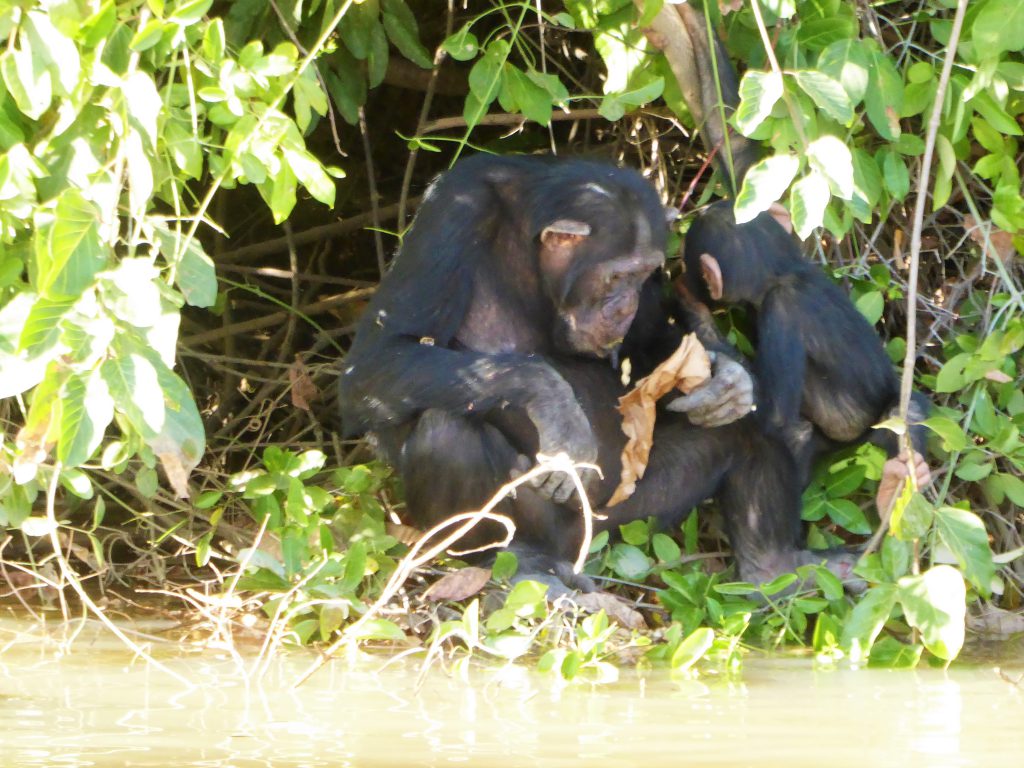
Other Wildlife on the River
You sit on the boat for about 1.5 to 2 hours. You sail over the Gambia River. There’s plenty to see! The temperature is warm enough that the cool breeze is very welcome! It could have lasted another hour for me.
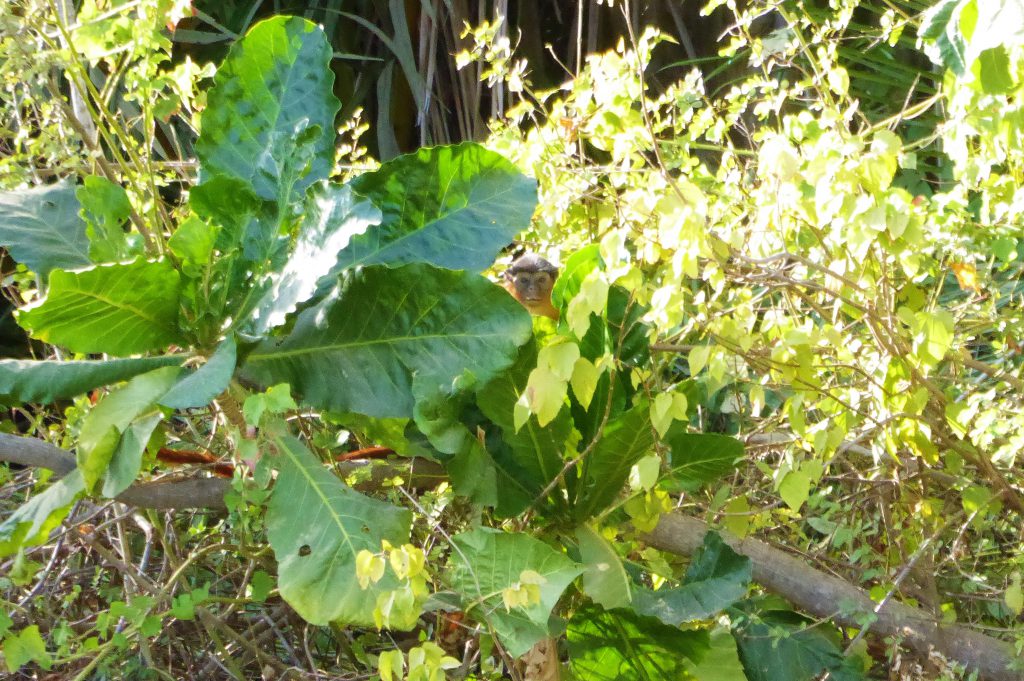
This one, the Red Colobus, seemed to be surprised to see us 🙂
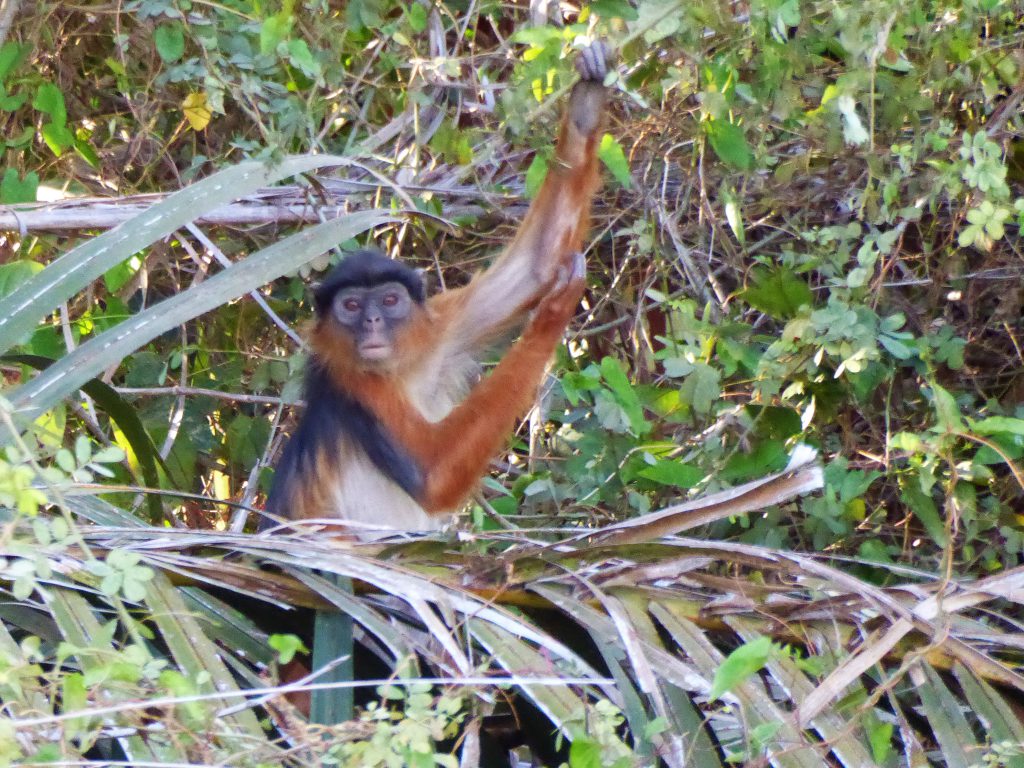
What else we saw:
- Hippos! It was a whole family! They stuck their heads above water. Snorted. Looked at us. Dove under again. Magical.
- Monkeys on the islands – Not just chimpanzees. Other monkey species also looked at us surprised from the island. 🙂
- Birds everywhere – I always love spotting birds! Herons. Cormorants. Fish eagles. Pelicans.
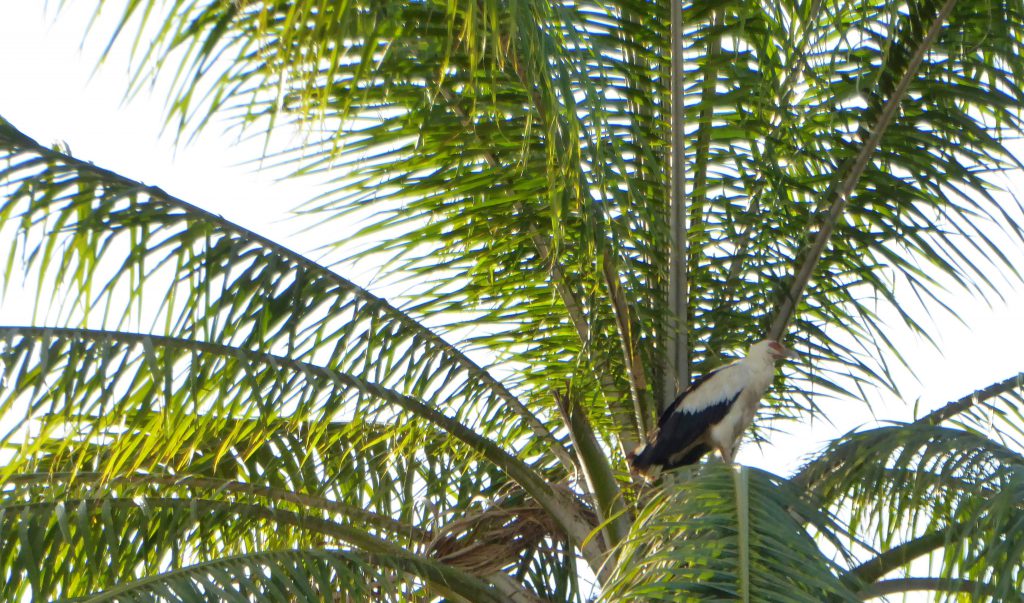
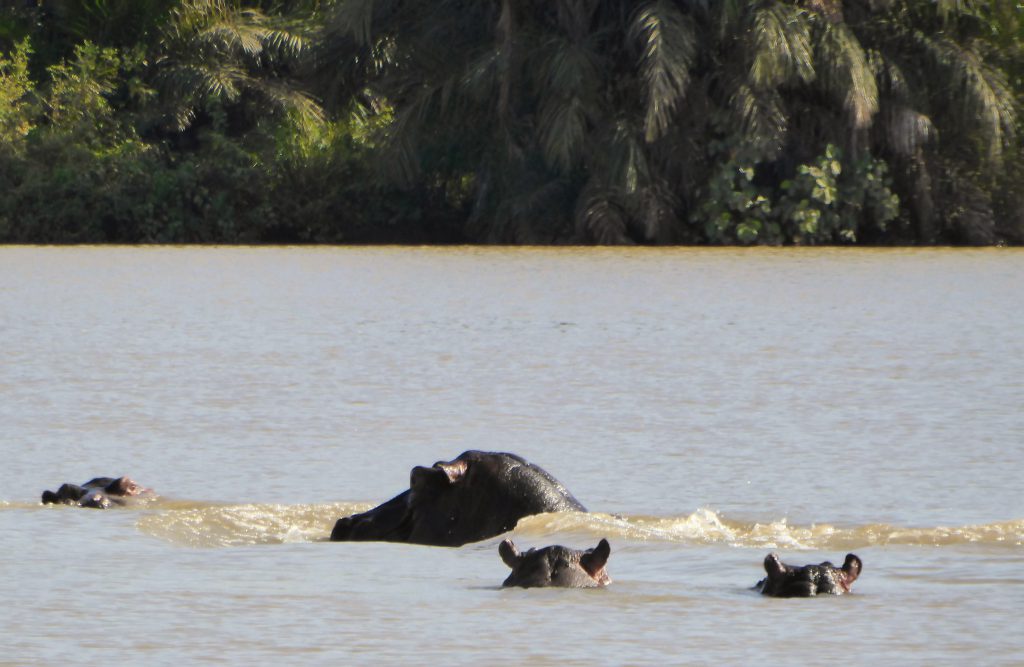
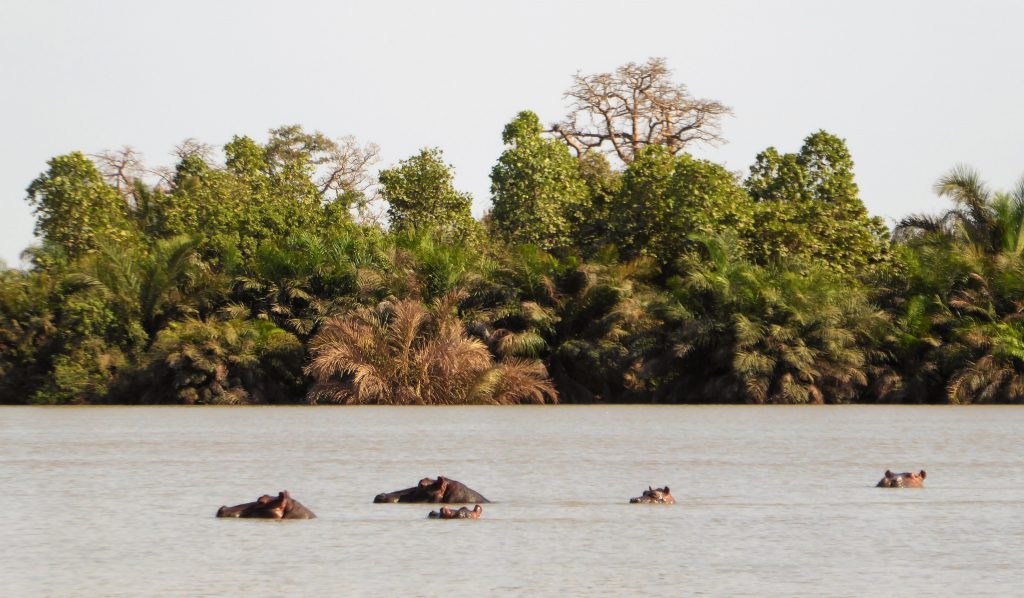
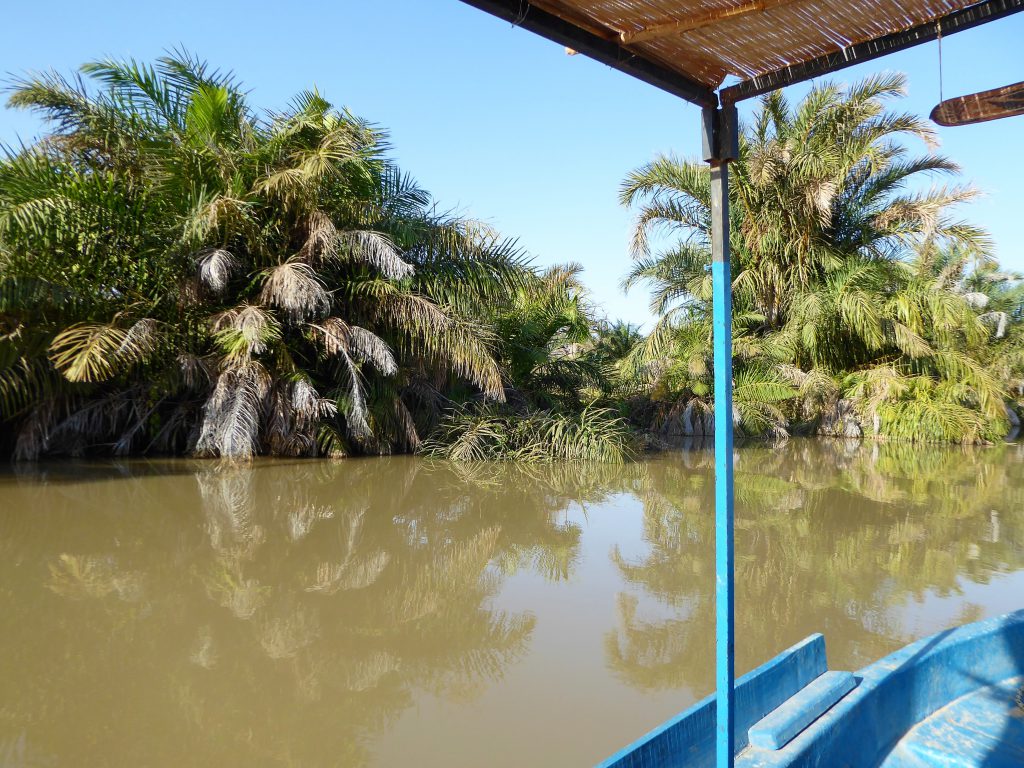
The Peace on the Water
There’s something magical about sailing on this river. The water flows quietly. The banks are green. Villages are scattered. Fishermen cast their nets. The sun slowly sets. This is Africa as you imagine it. Pristine. Authentic. Timeless.
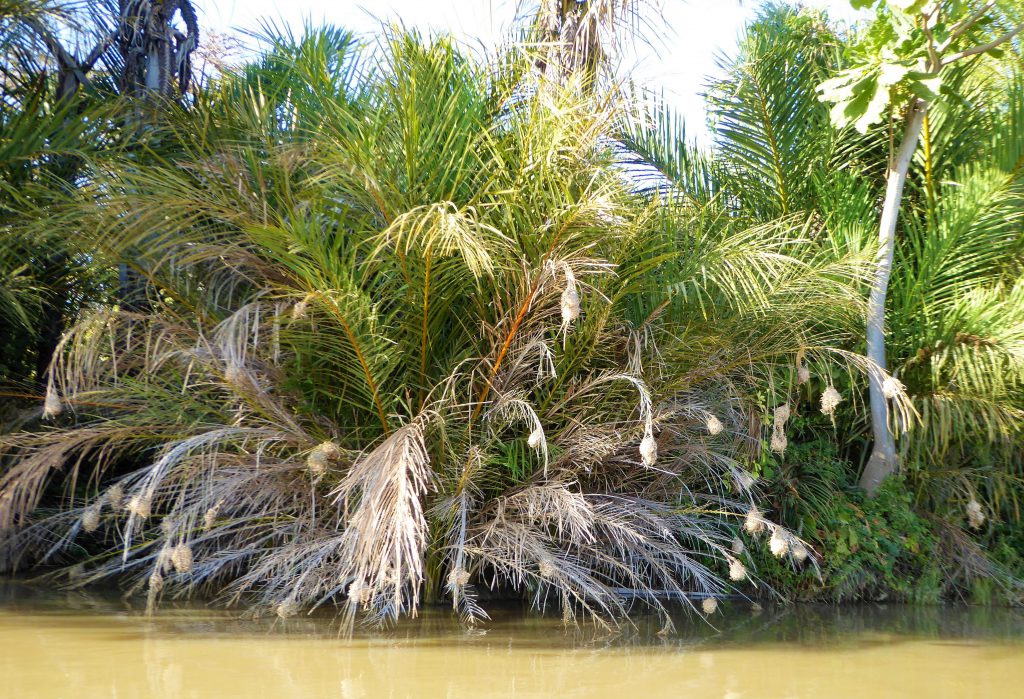
Weavers and their nests – If you come a bit later, towards sunset, you can see many weavers flying here. I recognized the nests you can see hanging in the tree. The yellow weavers then fly in at the bottom of such a nest. So special to see. I saw that once in South Africa! 🙂
Day 3: Back to the Coast
On the third day we went back to the coast. But now we chose a different route, via the topside, via the northern side. We took a shared taxi. This route is faster than the southern route we had taken on the way there. But you do have to cross the Gambia River by ferry.
All the time you save with the faster ride, you lose again waiting for the ferry. And the sailing itself. But that didn’t matter, it was a new experience. The ferry was an adventure in itself. Overcrowded. Too many people on board because the weather hadn’t been good and many people had been waiting. We were even stuck for a while.
Because yes… everyone is just allowed on board. Then we’ll see if we make it across. Safety is sometimes really hard to find here! But we arrived safely. Saw a different side of The Gambia. New villages. Different landscapes. The country had nestled itself even deeper in my heart.
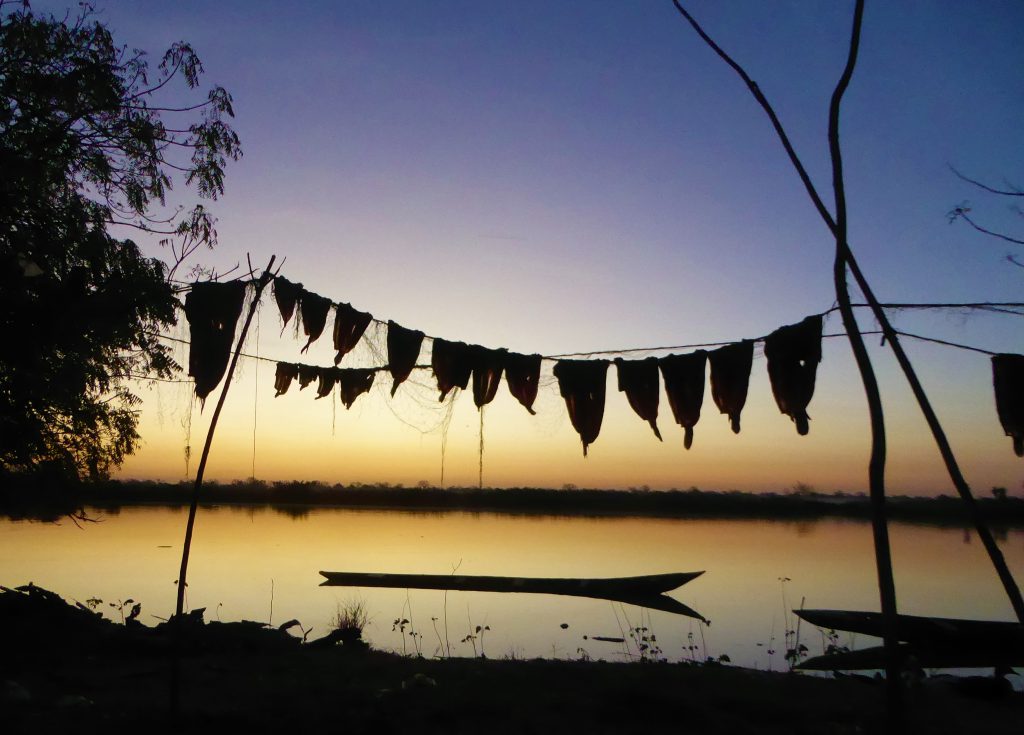
Practical Information: Wassu & Kuntaur
Accommodation: Kairoh Garden
Kairoh Garden is a great spot on the Gambia River!
Room types:
- Room with shower, sink and eco toilet – Own facilities in the room
- Room without facilities – You use the toilet block on the grounds (multiple toilets, showers and two sinks)
I must honestly say: I found it nice that I had a shower and sink in my room. But I didn’t use the eco toilet. I went to the public toilets. 🙂
Prices: In terms of price it doesn’t make much difference. It’s both just super cheap! Around 10-15 euros per night. A nice price, right?
For that you have a spot in a lovely garden by the river. The food is fine there and super affordable!
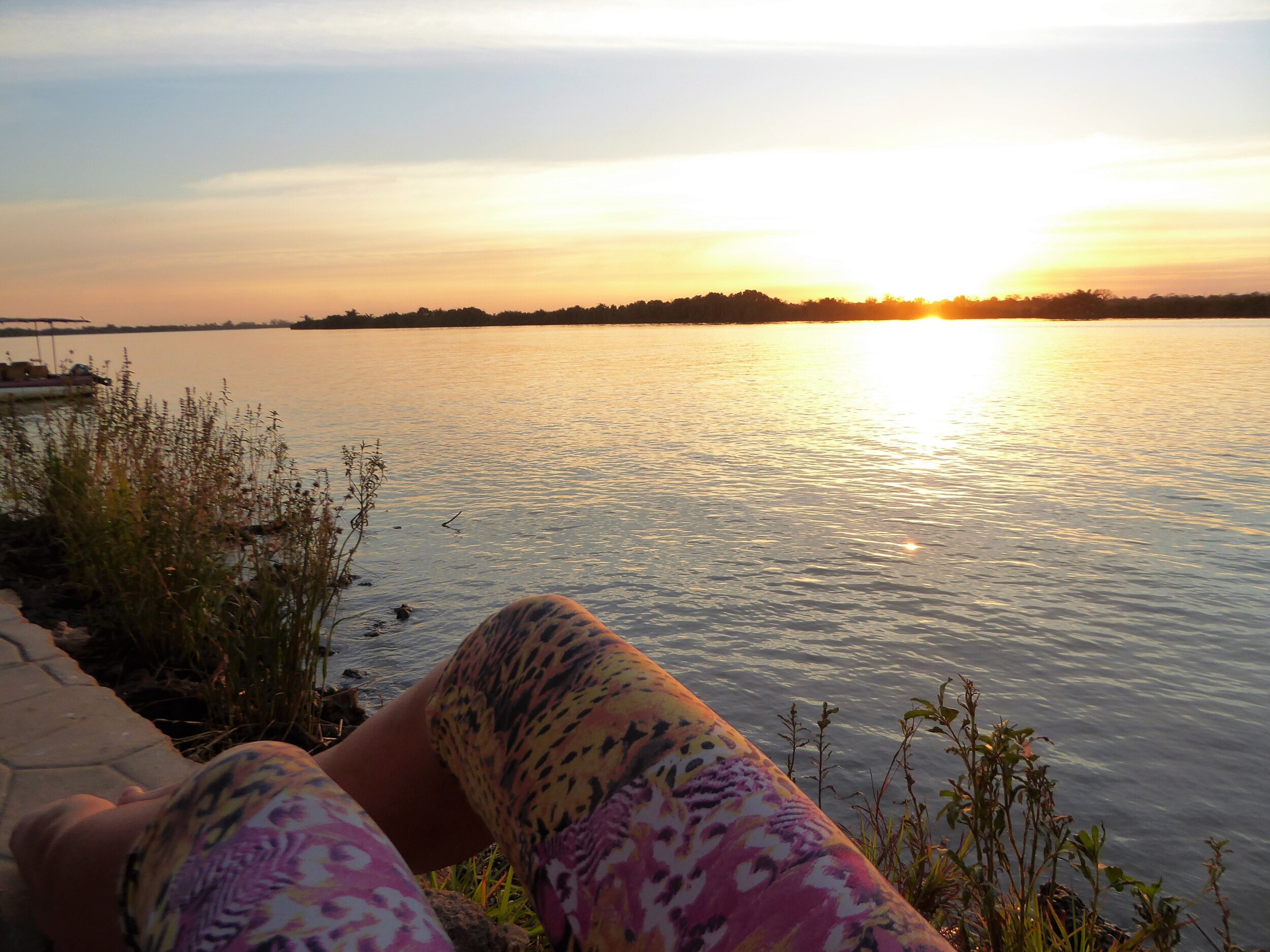
Booking: I can’t find Kairoh Garden on the well-known booking websites. But you can always book directly with them via their website: kairohgarden.com
Facilities:
- Terrace overlooking the river
- Restaurant with local dishes
- Bike rental (informal, own bikes)
- Excursions can be arranged
- Very hospitable owners
- Quiet, green environment
Transport to Wassu & Kuntaur
Outward journey: Touring coach bus (GPTS)
On the outward journey I went with a touring coach bus. There too I didn’t have to buy a ticket before boarding. Just track down the bus going to your destination. When it starts driving they come around. Then you have to pay.
Departure point: Kanifeng / Serekunda (bus station) Travel time: About 5 hours with stops Cost: About 150-200 dalasi per person Tips: Go early (bus leaves around 8:00-9:00 am), bring water and snacks.
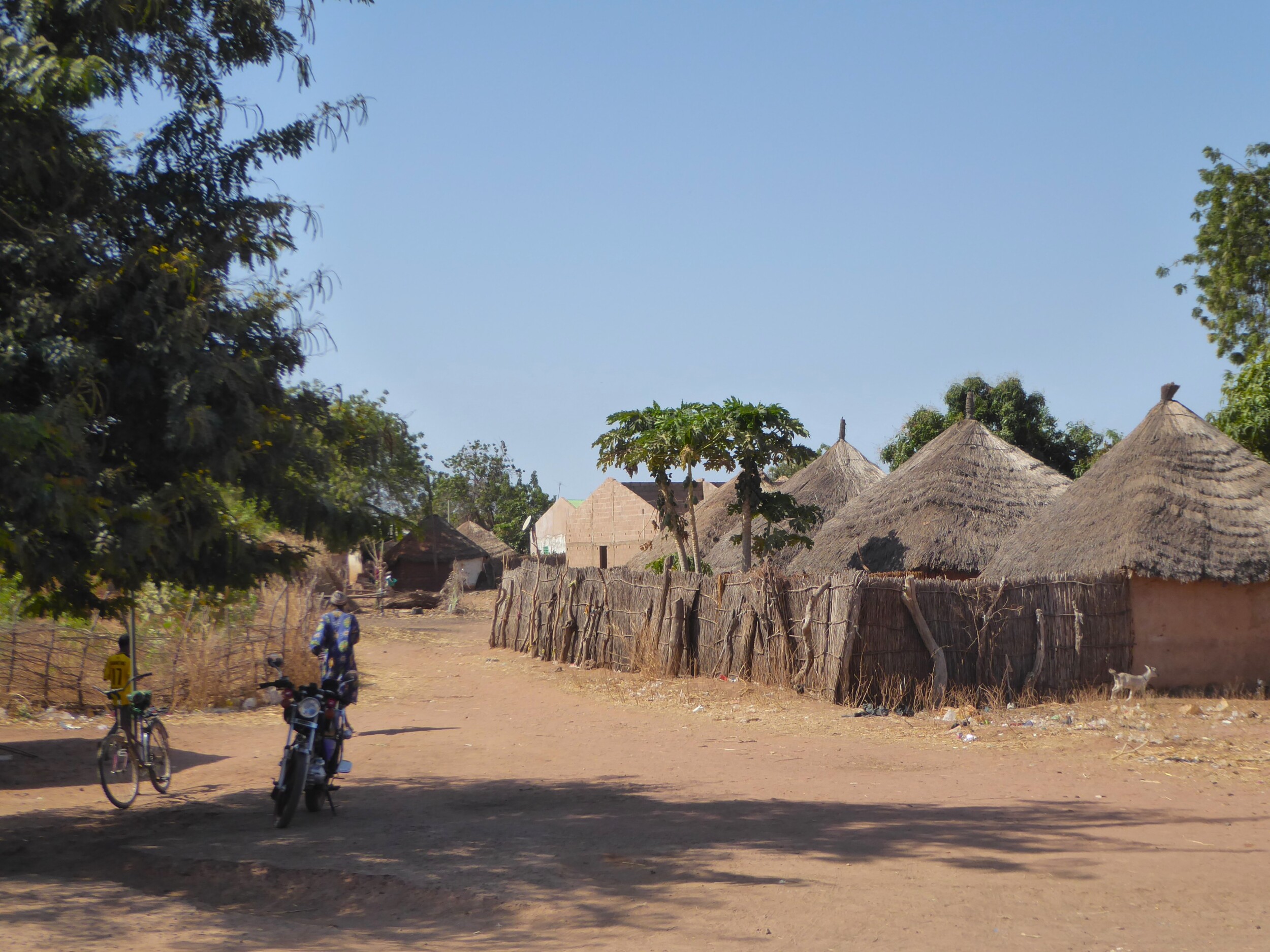
Return journey: Shared taxi + ferry (north route)
On the return I went with the shared taxi via the northern route. A longer ride, but ultimately faster than the bus.
Return route:
- Shared taxi from Kuntaur to Barra (northern side) – 4 to 5 hours
- Ferry from Barra to Banjul (across the wide Gambia River) – 30-45 min
- Taxi from Banjul to coastal area (Bijilo/Kololi) – 30-45 min
Costs:
- Shared taxi Kuntaur-Barra: 250-350 dalasi
- Ferry: 50-100 dalasi
- Taxi to coastal area: 100-200 dalasi
Note: The ferry can be busy, especially after bad weather. We were even stuck for a while because too many people had come on board!
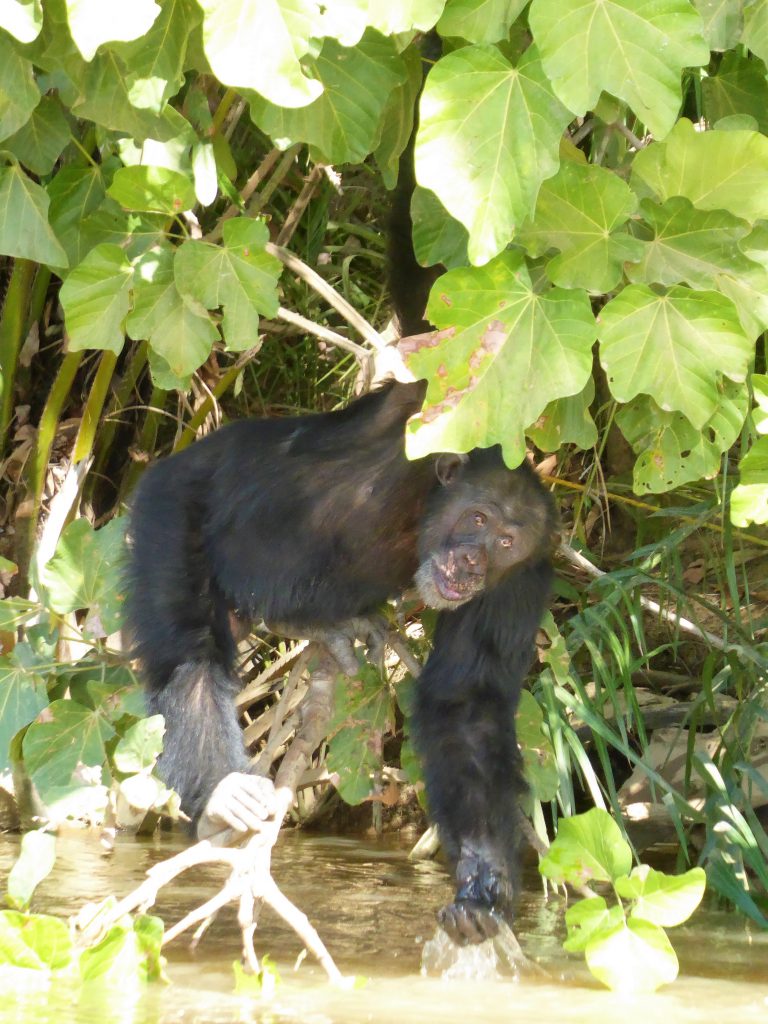
Costs Baboon Island Boat Trip
Boat rental: 2000 dalasi (per boat, not per person!)
- As a Gambian you can always come along for free
- You don’t have to pay for anything as a local
For foreigners:
- Share the boat costs with other travelers (often 2-4 people per boat)
- Baboon Island entrance: 100 dalasi per person
- Even if you don’t go ashore you pay this
- An official guide comes on board who tells you everything about the chimpanzees
My costs: I shared the boat with 2 other Dutch people. So:
- Boat: 2000 dalasi / 3 = about 665 dalasi per person (old prices)
- Entrance: 100 dalasi
- Total: about 765 dalasi (±15 euros)
Tips:
- Try to find other travelers to share with
- Go late in the afternoon (3:00-5:00 pm) for feeding the chimps
- Bring a good camera with zoom
- Sunscreen and hat are essential
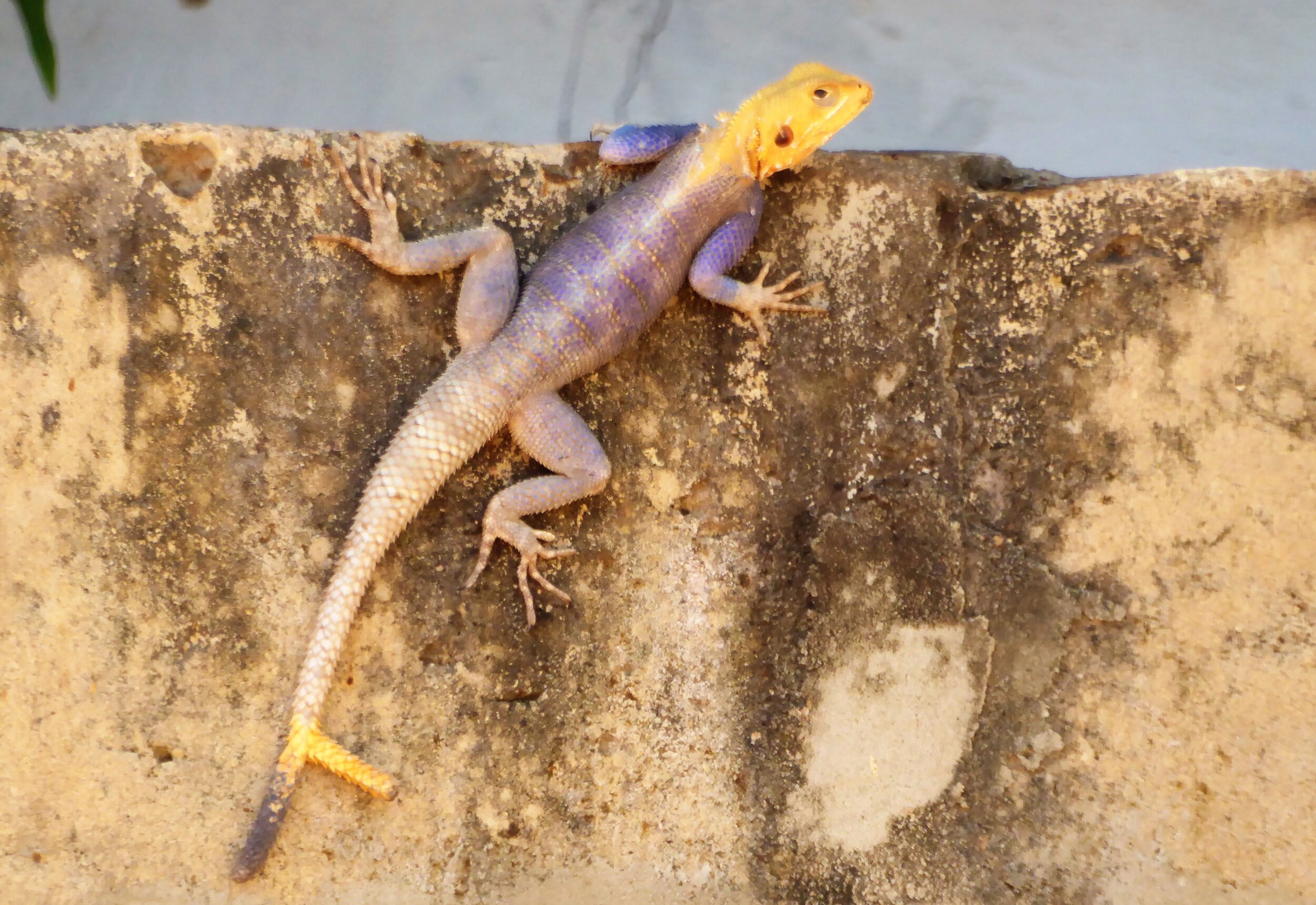
Best Time to Visit
Dry season (November – May):
- Best time for Baboon Island
- Roads easily accessible
- Pleasant weather
- Chimpanzees easier to see (less vegetation)
Rainy season (June – October):
- Green and beautiful landscape
- Fewer tourists
- Roads can be difficult
- Some accommodations closed
My recommendation: End of February / beginning of March (like I did). Perfect weather, not too hot, dry.
Extra Tips for Your 3-Day Trip
What to Bring
- Sun protection – Cream, hat, sunglasses
- Good camera – With zoom for chimpanzees and birds
- Insect spray – Especially by the river
- Enough cash – No ATMs in Kuntaur
- Small backpack – For day excursions
- Water bottle – Stay hydrated
- Light clothing – But covered shoulders and knees out of respect
- Flashlight – For evenings (limited electricity)
My Personal Conclusion
This 3-day trip was the highlight of my Gambia trip. Yes, the coast is beautiful. The resorts are comfortable. The beach is lovely. But this… this is the real Gambia.
- The chimpanzees on Baboon Island were magical. Their eyes. Their behavior. So human.
- The stone circles of Wassu touched me. Their mystery. Their history. Their silence.
- But the most beautiful? The encounters with people. The hospitality. The stories. The shared laughter.
Are you going to The Gambia? Then go inland. It’s worth it more than worth it.
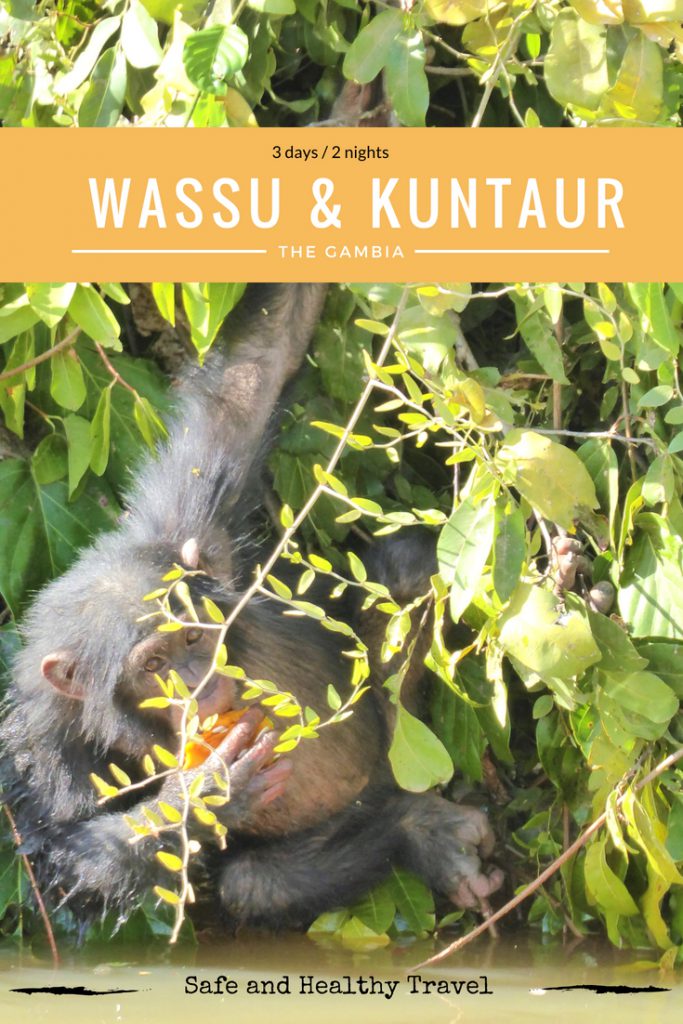
Wil je meer lezen van mijn reis in The Gambia?
